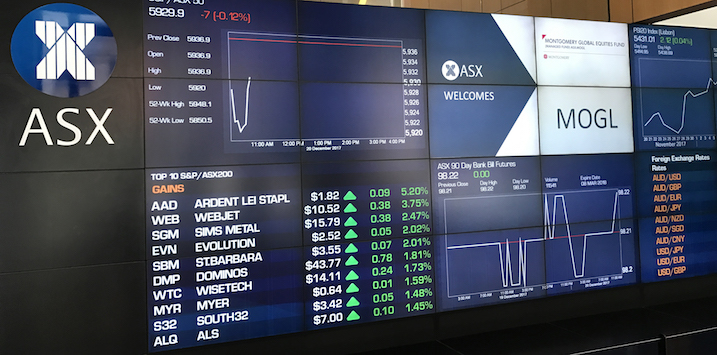
HOW IS MOGL PRICED?
We received the following feedback from an investor this week: It’s a mystery to me how MOGL is priced, the dynamics on the share price seem to defy the market. So we thought we would give you some more information on this.
Firstly, let’s start by saying we don’t own the market, our long-only investment strategy owns 15 – 30 high quality under-valued businesses. We will typically invest in an all-cap portfolio of businesses listed on major global stock exchanges with a focus on North America, Western Europe, the United Kingdom, Japan, Hong Kong, Singapore and Australia.
We invest with two very important criteria in our portfolio:
- The businesses that we invest in need to be high quality with structural tailwinds, so they’re the winners in their industries.
- And they need to be materially undervalued, so their stock prices are reflecting very low expectations for future revenues and future profits of these businesses.
What exactly is MOGL?
The Montgomery Global Equities Fund (Managed Fund) is an active Exchange Traded Managed Fund, most simply, a managed fund that is traded on a stock exchange such as the ASX. They are built like managed funds, but trade like shares, meaning that pricing is transparent and they can be bought and sold during any trading day just like ordinary shares. The Montgomery Global Equities Fund (Managed Fund) is quoted under ASX ticker MOGL.
How does this fund trade and how is it priced?
Indicative Net Asset Value (iNav)
The fund is priced throughout the day. During each ASX trading day, an iNav is published to take into account any movement of the prices of those securities that comprise the fund’s investment portfolio and any foreign exchange movements. Any position within the fund that is openly traded, either currencies or stocks, that are open during Australian trading hours, such as Australian stocks, Hong Kong stocks, those prices move around during the day and are reflected within the iNav price MOGL units.
We have a market maker, Macquarie Bank, who work for a flat fee to make sure that the price that is offered on the buy and the sell side is around the net asset value of the fund, every 15 seconds.
You’ll see that it’s either $0.01, or possibly $0.02, deviation either side of the net asset value. That is reflective of the buy/sell spread, 0.28 per cent, the same spread that you would pay if you entered or exited the unlisted version of the fund.
Net Asset Value
We effectively get the pricing of the underlying stocks within the portfolio, when they close in the US, and in European markets, and any market, basically once closed, we get the last closed price.
The net asset value (NAV) of the fund is calculated by deducting the liabilities (including any accrued fees) of the fund from the aggregate value of assets. The NAV on a particular business day reflects the value of the fund on the previous day at the close of trading in each market in which the fund invests. The NAV per Unit is calculated by dividing the NAV by the number of units on issue in the fund. An estimated NAV per unit is published daily in the MOGL investor centre.
You can find more information about MOGL and the NAV here: MOGL Investor Centre
Currently if you compare MOGL vs VGS the share price growth of the ETF is better over the same time frame Dec 2017 – Mar 2019 i.e. 9.38% vs 5.98%.
I have not included any distributions in this calculation.
Hopefully, over a longer period of time an active fund like MOGL can produce better results.
Hey Joe,
Thanks for your comment, and yes as you have mentioned you need to consider MOGL’s distributions (or yield) in calculating it’s return. The share price movement alone will not give you the full picture. Moreover, when factoring in it’s distributions MOGL’s return since inception is actually 10.13% after fees, an excess return of almost 1% over VGS. In fact, if you look at the track record of its unlisted equivalent the Montgomery Global Fund, it has outperformed VGS/the world market by almost 11% since 1 July 2015 after fees with on average 20% in cash.
Kind regards, Dean.